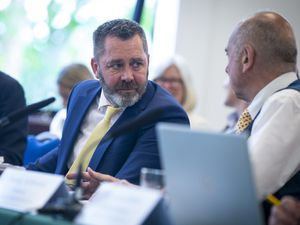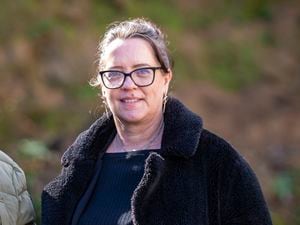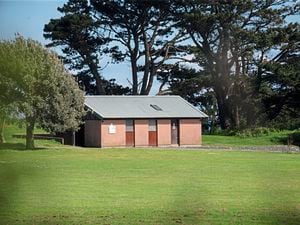OPINION: ‘Affordable’ homes defined: £135,900
A just published Guernsey Housing Plan sets out how serious the island’s housing crisis is and the consequences for the economy if left unresolved. But, says Richard Digard, the proposed cure could seriously damage existing homeowners’ wealth

EVERYONE, I guess, knows Guernsey has had a housing crisis for at least the last 20 years.
Cost, quality, sky-high rents and little security of tenure all add up to one thing – significant numbers of people who can’t afford to buy a home, or even rent one. And that’s causing islanders to leave and, increasingly, preventing people coming here to work.
It’s partly why we have up to 3,000 job vacancies, 300 in the States alone, and around 600 in the financial services sector at exactly the same time as we need more people in work and paying tax to help plug the black hole in government finances.
This vicious circle could be ended at a stroke if the island had more homes people could afford.
The exact number is known, 1,565 new units over the five years to 2027. Until now, however, no one has ever said what ‘affordable’ housing means. And thanks to work headed by Lindsay de Sausmarez, the president of the Committee for the Environment and Infrastructure, we do.
It’s £135,900 to £184,437 for a place to call your own.
This is remarkable for two reasons. Firstly, most homeowners would view that as pretty low – especially when they are in hock to the bank for many multiples of that, since the average cost of property was £600,836 at the end of June this year, and represents significant negative equity.
Secondly, that ‘affordable’ figure is remarkably precise and it’s not clear how it relates to actual building and plot costs.
But before I explain how Deputy de Sausmarez and her colleagues arrived at it, we need to be clear how serious the unaffordability crisis is for the island. In short, it threatens its very existence.
That’s not me saying that, by the way. It comes from Deputy de Sausmarez’ own consultants, arc4, who say the housing market and the existing demographic changes pose ‘what is an existential challenge for the Bailiwick’.
Strong stuff – so how can that be?
‘The local “indigenous” population is not replacing itself. This is a developed economy problem.
'However, the population is declining at a slightly faster rate than the UK or EU. While births have exceeded deaths since 2015, the recent average fertility rate of 1.4 births per female is well below the 2.1 births required for a break-even population replacement rate,’ says arc4.
So unless there is significant in-migration, Guernsey’s population will fall. Hurrah, many of you will say. The island’s already overcrowded and frenetic. Well, be careful for what you wish for, say the consultants. ‘The long-term lack of replacement [population] means over time it will become necessary to augment the labour force and the tax base derived from employment.’
In other words, without what used to be called guest workers coming in, those still here will have to pay more tax (on top of the GST we’re told we need) just to stand still and maintain public services.
Oh, and ignore those who say we’ve already had too much immigration. In reality, the population increased by just 1.5% in the last 10 years compared to Jersey’s 5.5% (nearly four times higher) and 6% in England and Wales.
To reinforce the message, arc4 says this: ‘Whilst static population growth may fit other environmental aspirations, it is not consistent with a sustainable economy, or economic growth. Much of the UK’s limited projected growth for the next few years is predicated on significant net in-migration. Lower growth means less revenue to fund the States’ expenditure.’
So, more and cheaper housing it has to be unless you want Guernsey, literally, to go down the tubes.
And what does avoiding disaster mean in practice? Well, an immediate house-building programme of 313 properties a year, a level we’ve never achieved in the last decade – barely half that, in fact. Longer term, and maintaining the 300+ net in-migration identified as required, this translates as an estimated 3,370 new housing units by 2040.
And if that sounds a lot, it’s because it is – something like 41 to 114 football fields-worth of new estates, or covering between a quarter and three-quarters of L’Ancresse Common in housing.
Before you throw up your hands in horror and say that can’t possibly be allowed to happen, do bear in mind that ‘only’ about 15% of the island is built upon. It looks more than that because of the ribbon development allowed to spread along island roads when horticulture was the dominant industry, but there is room, at least in theory. And that’s before reclaiming areas like Belle Greve Bay.
To be clear, I’m not saying I like this or that it’s a good thing. But the careful work done by Environment, Home Affairs, the Committee for Employment & Social Security and the Policy & Resources Committee, plus consultants KPMG and, more recently, arc4, demonstrate it’s essential – and unavoidable – if you want Guernsey to tick along much as it is now and be able to look after the rapidly growing older sector of the community.
The key to doing so, as we’ve already noted, is making property affordable. Currently, prices are 16.3 times median earnings, out of reach for all but the highest paid or those lucky enough to have access to the bank of mum and dad and, increasingly, gran and grandad too.
This is stratospheric territory, and worse even than Kuwait and Luxembourg.
To put things right, rents need to halve and property prices fall to 3.5-4.75 times median earnings, according to arc4 and, I believe, endorsed by Environment. That gives us the £135,900 to £184,437 I quoted earlier based on the end 2022 figure of £38,829.
Even if you say that most property will be bought by couples on joint incomes, that still implies ‘affordable’ is £271,800 to £368,874 and a significant drop on today’s values.
At average prices, the island’s housing stock is very approximately £16bn and needs to shed up to half of that admittedly rather crude valuation of mine, but it does indicate the significance of what’s implied by affordable and the building programme needed to achieve it.
What I hope you’ve also noticed here is that I’ve not blamed the current or previous States for this or added comment of my own.
A bit like boiling the proverbial frog, it’s happened gradually and over decades and has now reached crisis point.
But taking the heat out of the property market for the long-term benefit of the island does rather imply that thousands of existing homeowners now have to watch the value of their property plummet.





